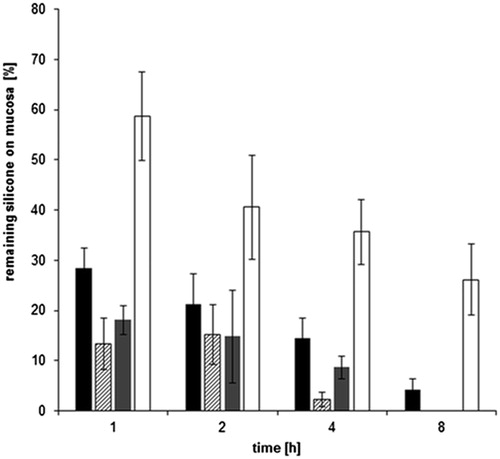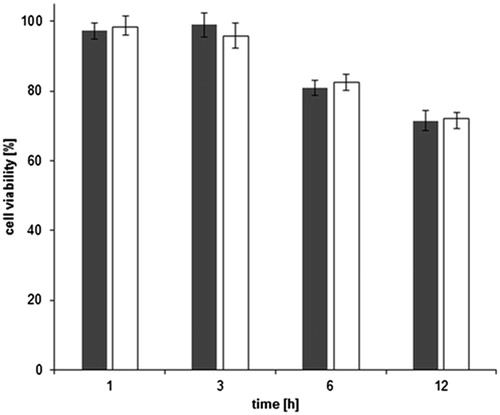Figures & data
Figure 1. Scheme of coupling reaction with MPA as a thiol ligand: activation of carboxylic acid with DIC and HOBt and subsequent formation of amide bond with amino-modified silicone oil in a one-pot procedure.
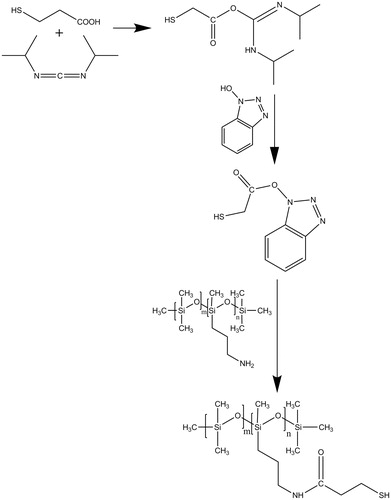
Table 1. Formulation compositions during optimization of a self-emulsifying system for thiolated or unmodified silicone oil.
Figure 2. Effect of dilution on droplet size of optimized SEDDS formulation containing unmodified silicone (gray bars) and silicone–MPA (white bars) as well as on PDI values for unmodified silicone (▴) and silicone–MPA (□) emulsified in 0.1 M phosphate buffer pH 6.8. (means ± SD; n = 3). No significant difference between unmodified silicone oil and silicone–MPA at p = 0.05.
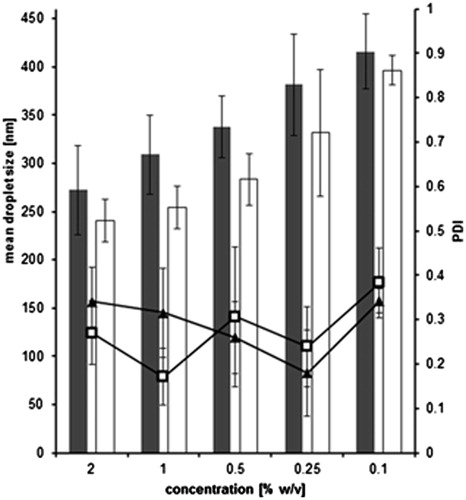
Figure 3. Influence of temperature on droplet size of optimized SEDDS formulation containing unmodified silicone (gray bars) and silicone–MPA (white bars) as well as on PDI values for unmodified silicone (▴) and silicone–MPA (□) emulsified in 0.1 M phosphate buffer pH 6.8 (means ± SD; n = 3). No significant difference between unmodified silicone oil and silicone–MPA at p = 0.05.
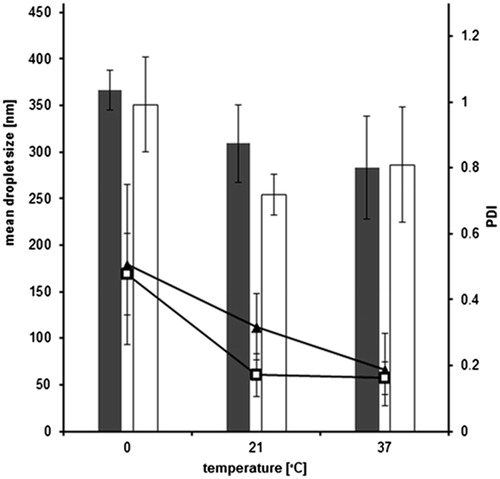
Figure 4. Influence of pH on droplet size of optimized SEDDS formulation containing unmodified silicone (gray bars) and silicone–MPA (white bars) as well as on PDI values for unmodified silicone (▴) and silicone–MPA (□) emulsified to 1 % (w/v) solutions (means ± SD; n = 3). Significant difference between unmodified silicone oil and silicone–MPA at p < 0.02.

Table 2. Antifoaming activity assay based on USP method.
Figure 5. Time for foam destruction determined with freshly excised porcine mucosa in 0.1 M phosphate buffer pH 6.8 at 37 °C. Results are listed for simethicone, dimethicone, non-thiolated silicone oil and silicone–MPA alone or incorporated in SEDDS, respectively (means ± SD; n = 3).
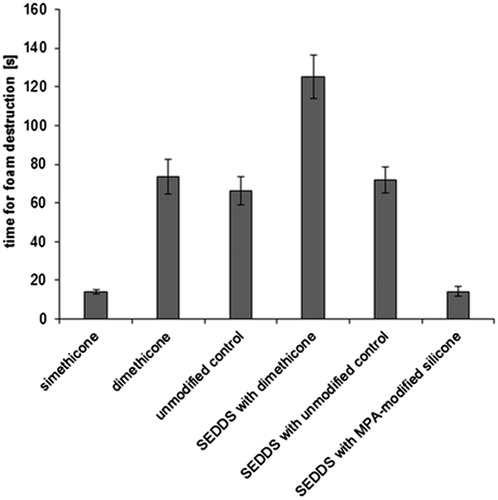
Figure 6. Comparison of mucoadhesive properties of simethicone (black bars), dimethicone (shaded bars) and formulations with unmodified silicone (gray bars) and silicone–MPA (white bars) after 1, 2, 4 and 8 h incubation with 0.1 M phosphate buffer pH 6.8 at 37 °C on freshly excised porcine mucosa (means ± SD; n = 3). Significant difference between simethicone and silicone–MPA at p < 0.02.
